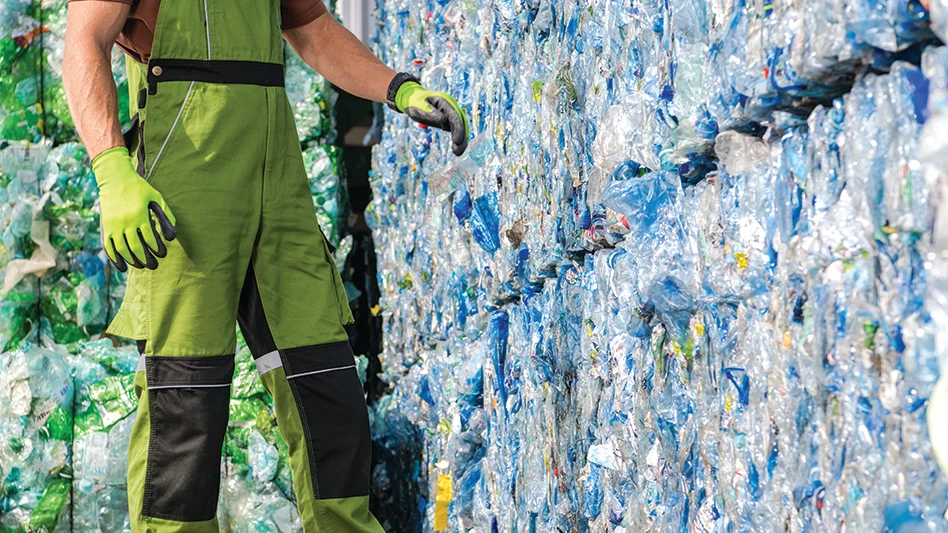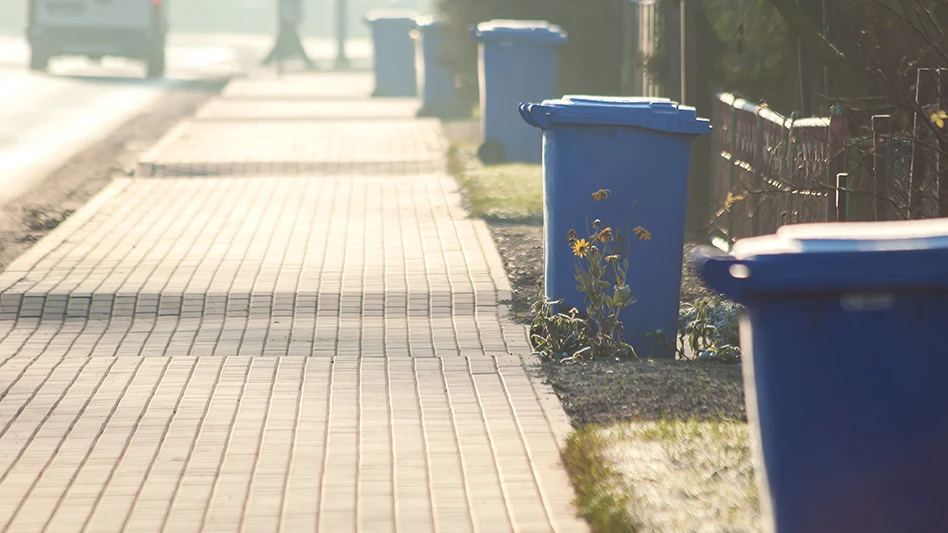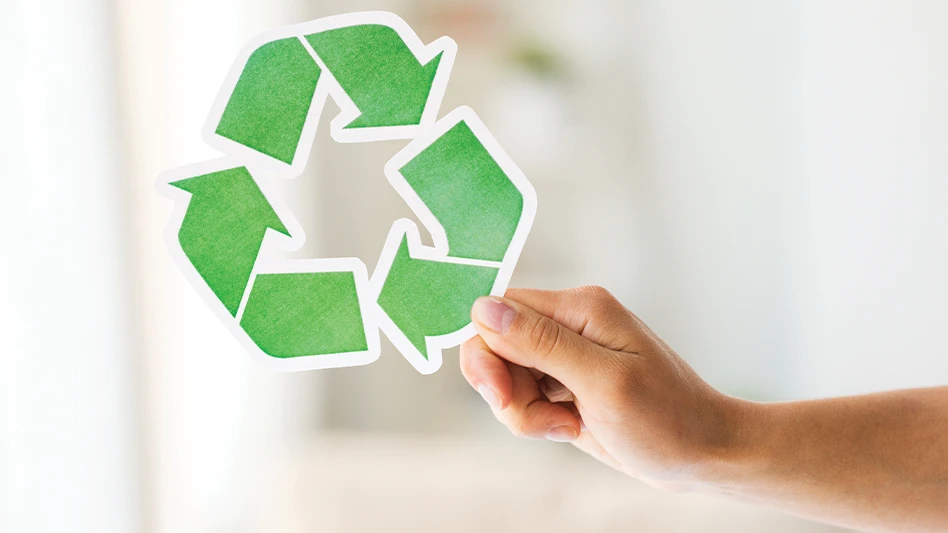
When Sherill Baldwin traveled to Nova Scotia, one of the three Maritime Provinces of Canada, she saw similar signage for recycling throughout the area. Baldwin, an environmental analyst in the sustainable materials management unit at the Connecticut Department of Energy and Environmental Protection (CT DEEP), says as she toured the province, regardless of where she went, she noticed universal messaging with color-coded signage for recycling being used across the province.
Baldwin brought this idea back to Connecticut. She serves as staff support for the RecycleCT Foundation Inc., a Hartford, Connecticut-based state-chartered fund that helps to raise public awareness and participation in recycling. The fund combines public and private resources to support the state’s recycling goals and material management strategies.
“We don’t have MSW (municipal solid waste) landfills in Connecticut,” Baldwin says. “So, when you say, ‘We’ve got to save the landfills,’ for us, it’s ‘Let’s take it out of the waste-to-energy facility and do something better with it.’”
In November 2017, RecycleCT launched the “What’s IN, What’s OUT” recycling public outreach campaign throughout Connecticut. The campaign created standardized recycling rules.
At the time of the announcement, CT DEEP Commissioner Robert Klee, who also is a
“We have an industry in Connecticut, and that industry needs our help. The more crap that we send them, it lowers the value of their commodities. We should be sending cleaner materials so that they can safely process materials.” – Sherrill Baldwin, CT DEEP
Recycling effectively
Getting residents to recycle more effectively is an effort many material recovery facilities (MRFs), municipalities and others have been working toward for years. The U.S. Environmental Protection Agency (EPA) has been reporting for some time that the national recycling rate has hovered around 35 percent (the most recent report shows it is 34.6 percent)—about the same rate as Connecticut.
CT DEEP’s “2015 Statewide Waste Characterization Study,” released in March 2016, shows that Connecticut’s single-stream recycling arriving at MRFs was comprised of 18 percent contaminants.
Many residents “
Other residents continue to bag their recyclables. These bags typically are landfilled because opening them can be a safety concern for workers. (According to the state’s waste characterization study, “bagged wastes” collected for the state’s single-stream MRFs were found to be roughly split between trash and recyclables: Some bags contained mostly or entirely recyclables, while others contained mostly or entirely trash. Other bags contained a mix of these materials. At 2.9 percent, the study reports that bagged waste was one of the 10 most prevalent individual material categories found in single-stream recyclables.)
Baldwin says helping people to understand they are part of the collection side is crucial. She explains, “We have an industry in Connecticut, and that industry needs our help. The more crap that we send them, it lowers the value of their commodities. We should be sending cleaner materials so that they can safely process materials.
“It’s important for folks to know they’re part of a larger process,” Baldwin continues. “The more they can help, the more successful recycling will be in our state.”
Universal list

One way RecycleCT has helped residents recycle better is with the addition of a widget, the Recycle Wizard, on its website that allows users to search what is and isn’t acceptable in curbside recycling bins. Anyone can visit www.recyclect.com, view the Recycle Wizard on the homepage and type in a material to figure out if it is recyclable or not in Connecticut. As of February 26, 2018, Baldwin reports the widget has had more than 100,000 views and nearly half as many searches for items.
A shareable widget, some MRFs, haulers, regional authorities
“We’re all using the same list,” Baldwin says of the statewide effort to standardize recycling.
Baldwin refers to the work it took to create the universal list as the “harmonization process.” In partnership with USA Hauling & Recycling, headquartered in Enfield, Connecticut; Willimantic Waste, headquartered in Willimantic, Connecticut; Winters Bros. Waste Systems, headquartered in Danbury, Connecticut; City Carting & Recycling, headquartered in Stamford, Connecticut; and Materials Innovation and Recycling Authority (MIRA), headquartered in Rocky Hill, Connecticut, the group developed the universal list of acceptable materials to collect in curbside residential bins.
Using resources available for free from The Recycling Partnership, Falls Church, Virginia, RecycleCT sent surveys to the state’s MRFs, municipalities and haulers. The surveys asked about acceptable and problematic materials for facilities.
She says the group considered questions like:
- “What is detrimental to your staff, meaning unsafe or not healthy?”
- “What is detrimental to your equipment in terms of what material wears it down faster than it should or maybe shuts down the line?”
- “What is detrimental to the value of the commodities [recovered]?”
“As an outcome,” Baldwin says, “we discovered a couple of things. Of course, there are materials that are recyclable, but [MRFs] don’t want them in the bin. A great example is plastic bags. Another is textiles.”
Another lesson learned through working with the MRFs was their over-acceptance of some materials. Some municipalities were accepting materials that they really didn’t want, like shredded paper and polystyrene. “They’re in the service industry, and they’re trying to service the customer,” she recognizes.
This preliminary work with MRFs, Baldwin says, helped to get everyone on the same page and to create a universal list.
“We didn’t think everything would change overnight,” she says. “It’s a process to use this list and create a stronger recycling program for Connecticut, and we’ll all work together.”
Working together
Working together has been the root of Connecticut’s efforts to raise awareness about “What’s IN, What’s OUT” and to improve recycling rates statewide.
In 2014, RecycleCT was created through Public Act 14-94. The foundation has worked toward implementing a key goal of the legislation: increasing Connecticut’s diversion rate to 60 percent by 2024.
Baldwin says once the council was formed, through many meetings and discussions, the team figured out what types of programs to develop and grants to give. (
“We borrowed from other people,” Baldwin says of RecycleCT’s development of its universal list and recycling education campaign.
From free resources available through The Recycling Partnership to studying how the state of Rhode Island implemented its statewide standardized labels for recycling bins, Baldwin says RecycleCT has learned a lot from others.
“Rhode Island did a great statewide campaign,” she says.
During Earth Week 2017, which concluded on Earth Day, April 22, Recycle Across America (RAA) and Rhode Island Resource Recovery announced that Rhode Island would be the first state to adopt the standardized labels provided by RAA on its recycling bins.
“The standardization of labels for bins is crucial to promote recycling by reducing confusion and simplifying the process,” Rhode Island Congressman Jim Langevin says in a statement on RAA’s website.
Collaboration may be key to boosting recycling rates. In a letter to Capitol Hill April 11, 2018, the recycling and plastics industries call on the House majority and minority leaders to develop and advance an infrastructure investment package to address the United States’ need for better recycling efforts and innovation.
Kim Holmes, vice president of sustainability for the Plastics Industry Association, Washington, says in the letter, “The U.S. recycling industry is in a transformative time, and through investment in our recycling infrastructure, we can ensure the industry changes and grows in a way that will meet our domestic manufacturing needs for years to come.”
Among the
Baldwin says it is Connecticut’s goal to reduce contamination in its incoming recycling streams. While the “What’s IN, What’s OUT” campaign is voluntary, she says RecycleCT is hopeful the majority of the state will embrace it.
“Hopefully, it will reduce the confusion in that, as time goes forward, everybody will be on the same page in what is acceptable and what is not in curbside recycling,” Baldwin says. “CT DEEP is excited about having a consistent message for residents across the state.”

Explore the May 2018 Issue
Check out more from this issue and find your next story to read.
Latest from Recycling Today
- APR upgrades PCR certification program
- WM completes $40M automation project at Philadelphia MRF
- Speira commissions new furnace in Germany
- ABB report portrays paper sector circularity, emissions reduction
- RMDAS and Davis Index numbers portray stalled ferrous market
- Attero adds NGO veteran to its board
- AMCS launches the AMCS Platform Winter 2024
- Cirba Solutions celebrates construction milestone at Ohio plant





